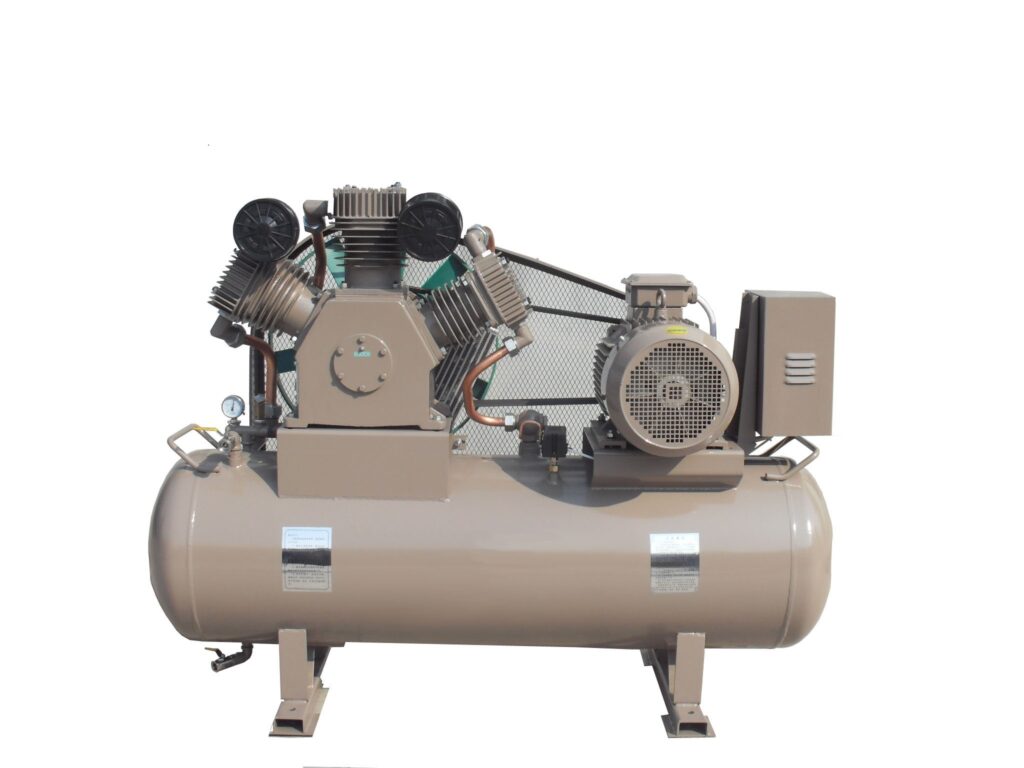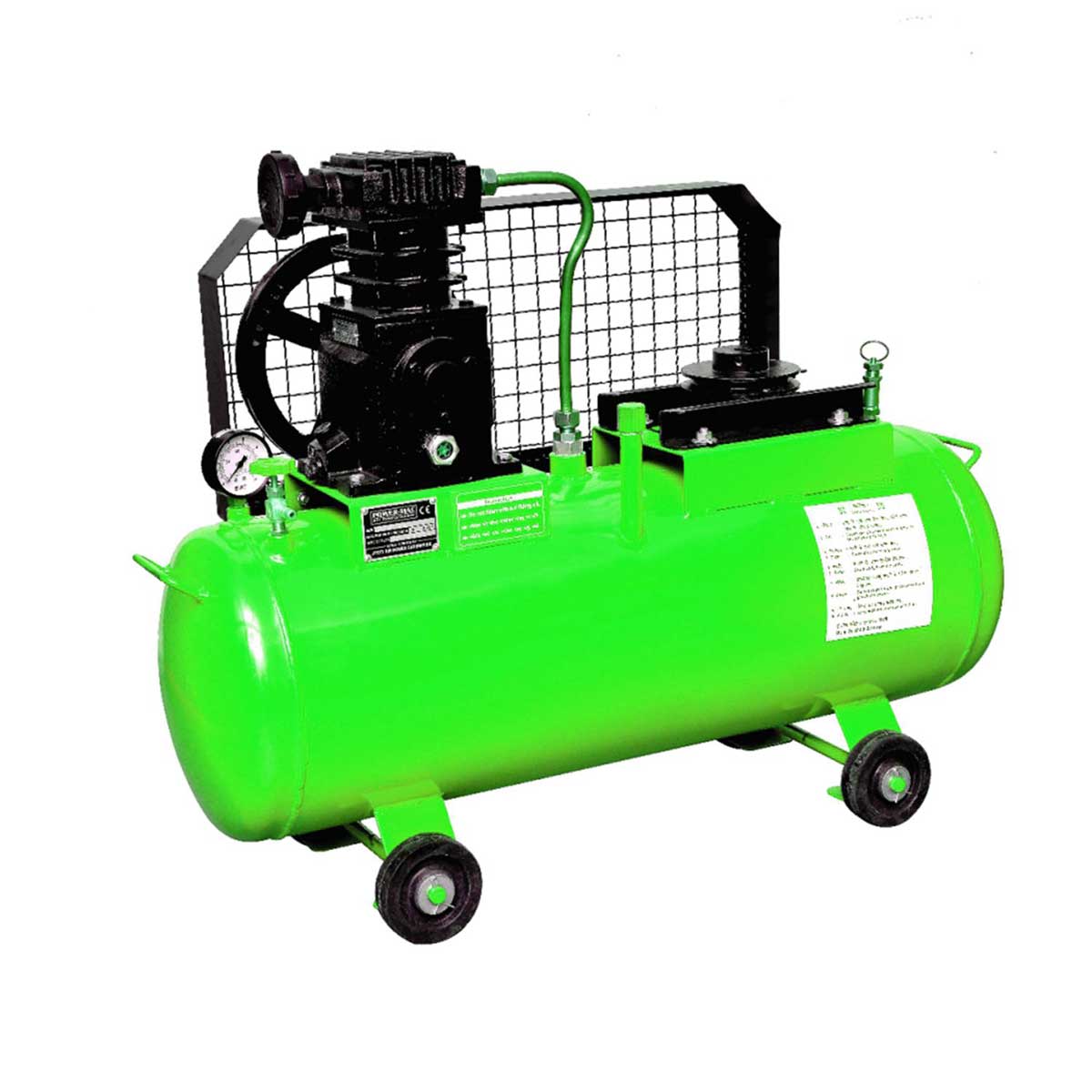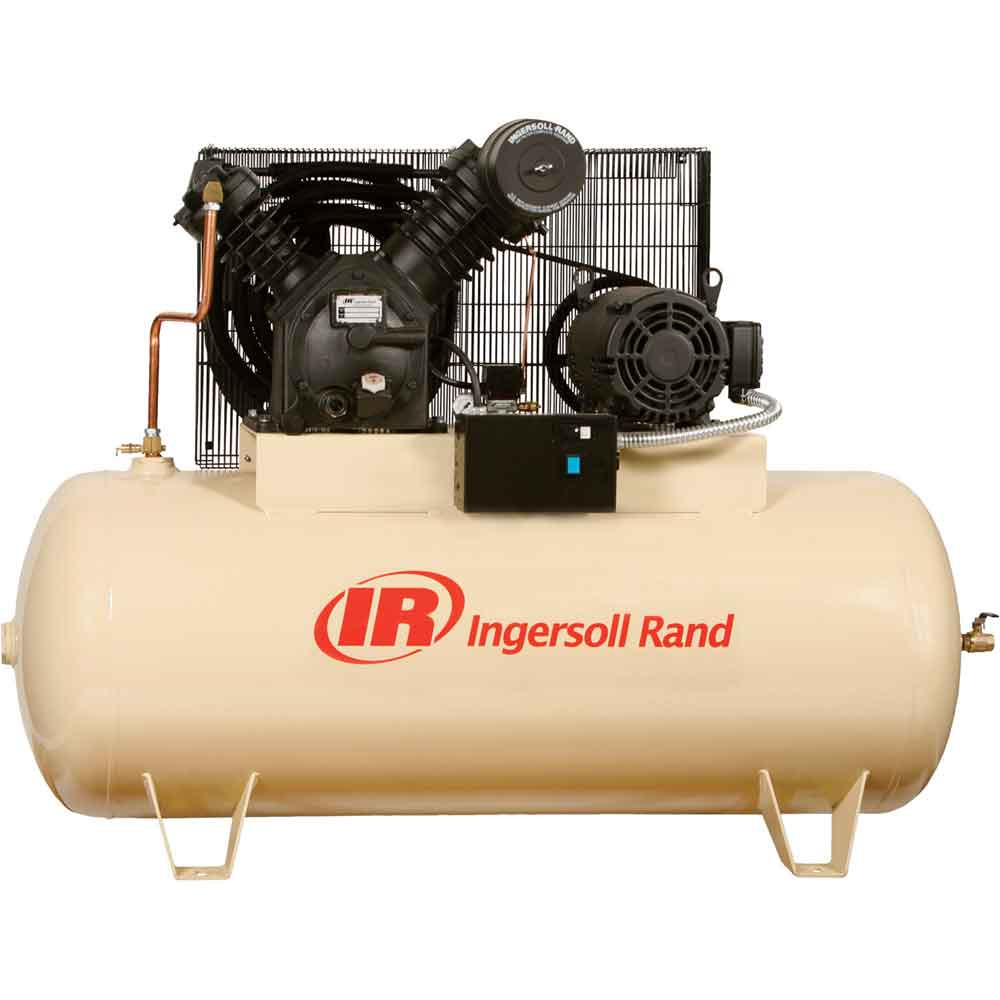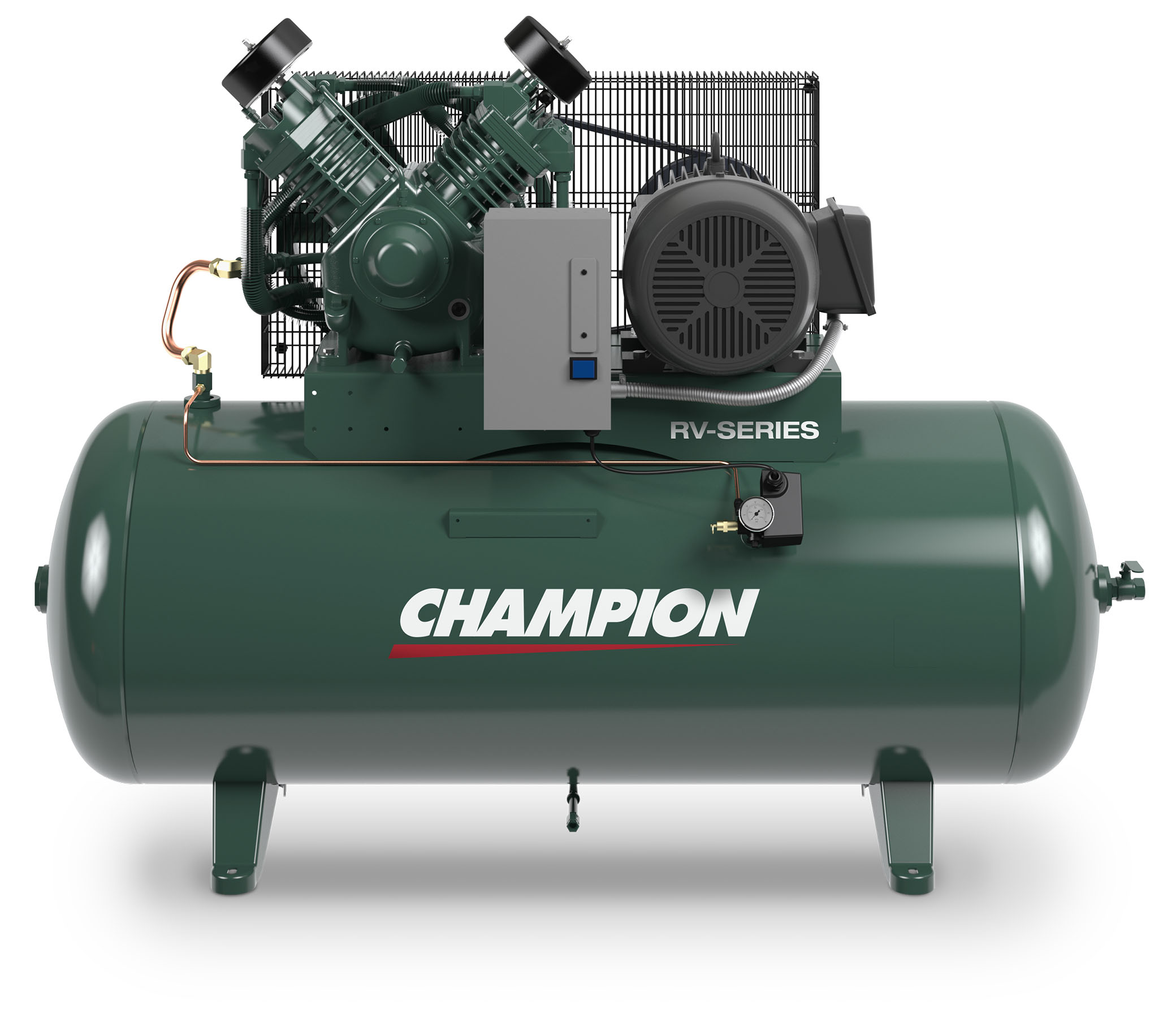Welcome to Linquip Blog. Today and in this article, we will look at the question “What is the Difference Between a Single Stage and a Two Stage Compressor?”
An air compressor is an indispensable tool in any workshop and provides a wide range of applications. Air compressors come in different types, shapes, and sizes, and choosing one type over the other can be sometimes challenging.
Stay with us until the end to find the answer to your question on this topic.
Single Stage Compressor
Let’s have a brief look at how a single stage compressor works. The main difference between a single stage and a double stage compressor is summarized in the difference of their performances. So, if you want to know the difference between these two compressors, it is better to know their working principles. In a Single Stage Compressor, the air is sucked into the compression cylinder through the filter by the action of both the inlet valves and the movement of pistons to the downside. Once enough air is drawn to the cylinder, the inlet valves are closed signaling the crankshaft to rotate, pushing the pistons upward and compressing the air while at the same time pushing it to the exit valves. The pressurized air (about 120 psi) is then discharged into the storage tank until when needed.
Two-Stage Compressor
The process of sucking and compressing air in a two-stage air compressor is similar to that of a single stage, but in the former compressor, the compressed air goes through the second phase of compression. This means that the compressed air isn’t discharged to a storage tank after the first phase of compression. The compressed air is compressed further for the second time by a small piston in the second cylinder. With this, the air is double pressurized which translates into double energy. After the second compressing process, the air is discharged into the storage tank for use in various applications.
The Main Differences Between a Single Stage and Two Stage Compressor
In the previous section, we talked about the differences in the performances of single and double stage compressors. We understand that all the differences are about the number of compressions of the air. In fact, the main difference between single and two-stage compressors is the number of times that air gets compressed between the inlet valve and the tool nozzle. In a single-stage compressor, the air is compressed one time while in a two-stage compressor, the air is compressed twice before it gets discharged into the storage tank.
Single-stage compressors are also known as piston compressors. The process of compressing air taking place within a single-stage compressor first starts with the air suction into a cylinder. Then, the trapped air is compressed in a single stroke with a piston at roughly 120 psi. At last, compressed air is moved onward to a storage tank to be used whenever it is needed.
The process within a two-stage compressor is similar to that of a single-stage, but with one variation: the compressed air isn’t sent to a storage tank; it’s instead sent to a smaller piston for a second stroke, this time at roughly 175 psi. From there, the double-pressurized air is cooled and delivered to a storage tank, where it serves as energy for vast arsenals of high-powered equipment.
Dual-stage air compressors produce higher air power in comparison with a single stage compressor, which makes them a better option for large-scale operations and continuous applications. However, two-stage compressors also cost more, which makes them better suited for factories and workshops than private use. For the independent craftsperson, a single-stage compressor will power a variety of handheld pneumatic tools that don’t exceed 100 psi. At auto shops, pressing plants, and other settings in which complex arsenals of air-powered machinery are utilized, the higher capacity of dual-stage compressor units is the more preferable option.
Which One Is Better?
The main question is, whoever wants to buy an air compressor, in which one of these two types are suitable for me? What are the differences between single stage compressors and two – stage compressors? In general, two-stage air compressors are more efficient, run cooler and deliver more CFM than their single-stage counterparts. While that may seem like a convincing argument against single-stage models, it’s important to realize that they have advantages as well. Single-stage compressors generally cost less and weigh less and electric models draw fewer amps. Which type is right for you depends on the work you want to do. Single-stage models are great for individual tradesmen or small crews who are framing, sheathing, roofing, or doing trim work. For larger construction crews or applications that require large amounts of air over extended periods, two-stage compressors are the go-to option.
Conclusion
The present article was an attempt to answer the question “What Is the Difference Between a Single Stage and Two Stage Compressor?” and deliver all the essential information about the differences between these two types of air compressors.
Regardless of the size or scope of a given operation, air-powered tools are essential to the productivity of craftspeople and work crews alike. If you are an independent woodworker or the owner of a crafts line, a single-stage compressor could help you make products faster, better, and more efficiently at a cheaper price. If you manage a work crew at a large pressing plant, two-stage compressors could be used to power the most heavy-duty aspects of your operation.
If you have any experience of using single and two–stage compressors, we will be very glad to have your opinions about their performance in the comments on our website Linquip. Moreover, if you have any questions about this topic, you can sign up on our website and wait for our experts to answer your questions. Hope you enjoyed reading this article.
Read More In Linquip






